The story began when an obscure monk in 12th century Italy added juniper berries and other locally grown herbs to raw aqua vitae to make it more palatable as a medicine. Fighting in the War of Succession in Holland, English mercenaries came to appreciate the fortifying effects of the spirit, called it Dutch Courage and brought a taste for it back to England.

Gin: From Monastery to Mothers' Ruin
by Maritravel
If one drink defines the social history of Britain it is gin which during the 18th century kept London's poor in a drunken stupor while sustaining the servants of the Empire abroad
Classes in Gin Appreciation - yes, really!
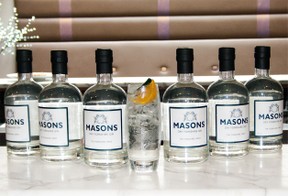 After years of evening classes brushing up on languages for holiday trips, delving into local history, and once (when I tried to be homespun and crafty) learning to reupholster a chair, I finally found a class that’s right down my street.
After years of evening classes brushing up on languages for holiday trips, delving into local history, and once (when I tried to be homespun and crafty) learning to reupholster a chair, I finally found a class that’s right down my street.
I have joined the Gin School at Charlotte's Bistro at Chiswick, London where, in an effort to advance my knowledge of the science of distillation I hope to learn the secrets of that most delicious of white spirits, gin, while managing to sample one or two cocktails. There must be a catch: the classes are free, complimentary drinks, and each Monday night a different producer will be in attendance to talk through their production methods and help with the tasting.
The first two evenings concentrated on a lesser known gin, Sipsmith London Dry Gin which is hand made in small batches in a copper still, the first to be launched in London for nearly 200 years. The name ‘Sip Smiths’ is said to celebrate the craft of distillation and the methods used in producing the gin from ten carefully selected botanicals from around the world.
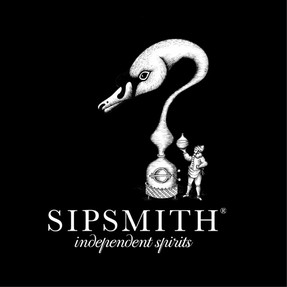
Monday 16th June and the class was sampling Chilgrove Dry Gin. Steeped in thousands of years of history and tradition, the Sussex hamlet of Chilgrove lies in a beautiful corner of rural England nestling at the foot of the South Downs and is home to Chilgrove Dry Gin. This is another ‘small batch’ distillation made by marrying the finest botanicals to a neutral spirit distilled from grapes, an unusual relationship which gives this particular gin its sophisticated character.
Despite the generosity of our hosts and the many tastings, my notes are still legible – to me at any rate – and my memory of the evenings spent with a sampling glass in hand in the pursuit of knowledge, is very clear. I am impressed with what I’ve learnt about something I hadn’t really given much thought to before and I shall have to rein in my enthusiasm for holding forth on the subject if I am not to have people avoid me at parties.
It was in Yorkshire after sampling one of the new ‘designer’ gins, Mason’s Yorkshire Gin, which celebrated its first birthday this year, and tasting the unique cocktail created from the spirit by Rory Gilbert, senior bar tender at Rudding Park Hotel in Harrowgate, the ‘Rudding Park Rose Cocktail', that my interest in the clean, white spirit sent me researching its history
A Brief (very) History of the Beginning of Gin Distillation
The youngest of the alcoholic drinks, gin has only been around for about 700 years whereas whisky can be traced back 1600 years and beer was being drunk 5000 years ago.
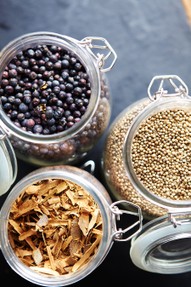
When in 12th century Italy a monk added juniper berries and other locally grown herbs to raw acqua vitae to make it more palatable as a medicine it went by the harmless sounding name of Juniper water. By the 16th century Juniper water had reached Holland where a chemist, Fransiscus Silvius (may his name be ever held in esteem) produced his own form of the spirit which he called ‘Jenever’. Most gin drinkers will have sampled the direct descendent of this form of the spirit, still sold in Holland in the traditional brown stone bottles, Oude Geneve.
After the English mercenaries returned home from the War of Succession in Holland with their taste for 'Dutch Courage' well established, William III started a scheme to discourage the drinking of Brandy (France then being the enemy) by making gin so cheap that sales quickly overtook those of ale and beer.
Mother's Ruin, London's Squalor and Hogarth's Prints
Gin becomes food and drink to the masses
As the London Guild of Distillers had lost its monopoly on gin production in 1690, anyone with a mind to could become a distiller. In the 1720s it was estimated that one in every four houses in London was a gin house or distillery, and there was no shortage of customers.
This cheapness ushered in a period of near perpetual drunkenness in English towns and cities where gin was sold in barbershops and brothels, dispensed like milk from carts in the streets and hawked to the inmates of the jails and workhouses. Men, women and children were constantly intoxicated, living, loving and dying in the gutters. Various Acts were passed during the 18th century to try and control the sale of gin but it was not until the latter part of the century that legislation had a chance of succeeding.
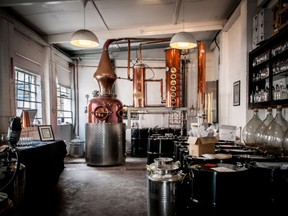
By the mid-19th century, gin shops in England were being replaced by the glamour of ornate Gin Palaces and a measure of control was introduced. The quality also improved when the more subtle London Dry Gin replaced the original coarse spirit, but its path to respectability was assured when officers of the Raj started adding gin to the quinine which they took as a precaution against malaria, inventing in the process the first gin and tonic. And British soldiers in South America taking the new digestive medicine Angostura Bitters found that this too went down better with the addition of a little gin: and so the Pink Gin was born. Let’s face it, what doesn’t go down well with the addition of a touch of Mother’s Ruin.
Old Tom Gin (which used liquorice to sweeten the otherwise sub-par liquor) apparently got its name from its distribution methods in the 1700s. The vendors, London distilleries which were mostly illegal, let people know they were in the gin business by placing a plaque of a tomcat in their windows. Between the cat’s paws was a tube which doled out a shot of gin for whoever deposited a penny into its jaws, although it wasn’t as automated as it sounds: a barman was on the other end funnelling the gin into the customer’s receptacle (frequently his/her mouth).
Social Changes that led to Drinking Changes
By the end of the 19th century social and cultural changes were afoot that led to a revolution in hygiene – railways delivering fresh milk, improvements in water quality, lemonade, soda water, etc., and this in turn led to less need for strong drink.
Gin never lost it’s place as a popular drink however, and the cocktail craze in the early 20th century together with prohibition in the USA, 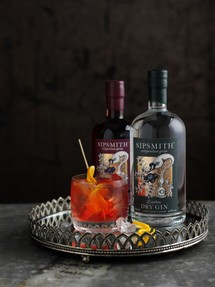 kept its popularity afloat right up to the invention of the greatest cocktail of all time, the Dry Martini.
kept its popularity afloat right up to the invention of the greatest cocktail of all time, the Dry Martini.
Today gin is more popular than ever with brand names being sourced from designers and eye-catching bottles giving instant recognition. But the present clean spirit is a far cry from the gin that was hawked through the streets of 18th century London.
Best Gins according to experts
If you’d like to bluff up first-hand, while also sampling the stuff, pay a visit to Charlotte’s Bistro in West London which tells the story of the latest gin brand to top the London cool lists. The East London Liquor Company is also a good place for gin-freaks.
Gins you have to try, according to the experts
Sipsmith.
Herno Gin Swedish excellence.
Beefeater The ne plus ultra of London dry gin, according to its master distiller Desmond Paine.
Chase GB Extra Dry Made from apples in Herefordshire, aka cider country.
Tanqueray Export (made in Scotland). Clean and citrusy.
Jack Cain’s. Made with hedgerow botanicals from Northumberland. Think thistles, honeysuckle and blackberry leaves.
Masons Yorkshire Gin whose new custom-made 300 litre copper alembic still is called ‘Steve’ .
You might also like
Foragers' WinesWhile it is possible to make wines from fruits grown in your garden,foragers ...
Traditional cider makingCider has been made in Western England since time immemorial, and there is mu...
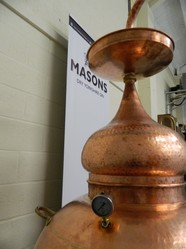

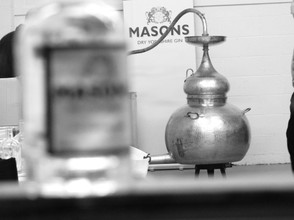
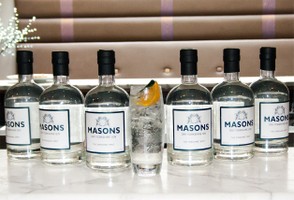

 The Alternative Picture Galleryon 04/20/2016
The Alternative Picture Galleryon 04/20/2016
 ROME - Where the Past Comes to Lifeon 03/26/2016
ROME - Where the Past Comes to Lifeon 03/26/2016
 Only in London - New Unique Guideon 01/25/2016
Only in London - New Unique Guideon 01/25/2016
 Manna, from Sicily, not from Heavenon 01/08/2016
Manna, from Sicily, not from Heavenon 01/08/2016
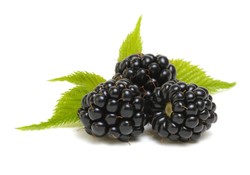

Comments
Gordons with Elderflower and tonic is delish. Just had some as it's the new flavor of the season and they were giving away tots in the local supermarket.
I had never thought of gin in these terms before, definitely British social history in a bottle. Must make a diversion to the Off Licence - oh no, they don't exist any more -off to the supermarket then. Thanks for an entertaining and informative read.
That's a pretty big IF on current standings. I'm debating whether or not to invoke Jo's idea of writing a controversial article about it. I have my own ideas, based on time I spent with national level sportspeople in my 20s.
Well, if England get through tonight I'll throw all caution to the winds and pour a liberal potion to celebrate. On the other hand I may have to have one to console myself - and those around me - so either way, it one moment on the lips and a month on the hips!
Oh God no... slimline tonics, icky icky! But then again, you can't drink any alcohol with appreciation if you're on a diet! Two swigs and you're anyone's because it goes to your head, no matter what it is. I'll be on the Pimms and lemo next month with the Proms starting, so I'll have to watch myself because that is a very easy drink to over-indulge.
And it's the perfect weather for a g & t at the moment. Don't you love the fizz. But don't use slimline tonics, the artificial sweetener in them spoils the gin.
Make mine a treble, and sharp about it, barkeep! I had Bombay Sapphire and tonic last time I indulged in some needle. Interesting, for sure. Especially as it was the export strength 47% not the UK's 40% version... Now that stuff does what it says on the bottle and then some.
I'm forever trolling my Dutch friends about Mothers' Ruin. I have to troll them about something!